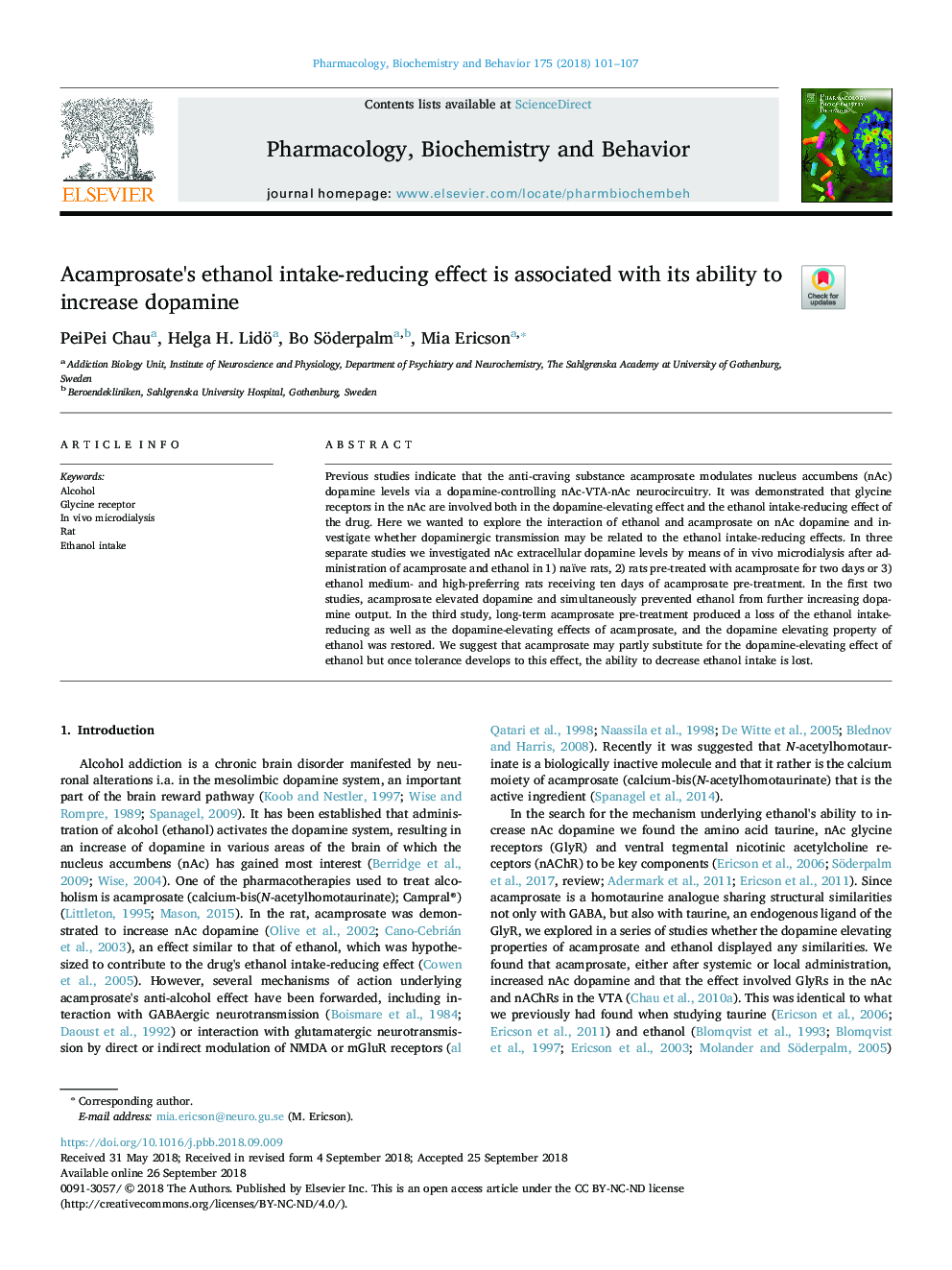| Article ID | Journal | Published Year | Pages | File Type |
|---|---|---|---|---|
| 11029388 | Pharmacology Biochemistry and Behavior | 2018 | 7 Pages |
Abstract
Previous studies indicate that the anti-craving substance acamprosate modulates nucleus accumbens (nAc) dopamine levels via a dopamine-controlling nAc-VTA-nAc neurocircuitry. It was demonstrated that glycine receptors in the nAc are involved both in the dopamine-elevating effect and the ethanol intake-reducing effect of the drug. Here we wanted to explore the interaction of ethanol and acamprosate on nAc dopamine and investigate whether dopaminergic transmission may be related to the ethanol intake-reducing effects. In three separate studies we investigated nAc extracellular dopamine levels by means of in vivo microdialysis after administration of acamprosate and ethanol in 1) naïve rats, 2) rats pre-treated with acamprosate for two days or 3) ethanol medium- and high-preferring rats receiving ten days of acamprosate pre-treatment. In the first two studies, acamprosate elevated dopamine and simultaneously prevented ethanol from further increasing dopamine output. In the third study, long-term acamprosate pre-treatment produced a loss of the ethanol intake-reducing as well as the dopamine-elevating effects of acamprosate, and the dopamine elevating property of ethanol was restored. We suggest that acamprosate may partly substitute for the dopamine-elevating effect of ethanol but once tolerance develops to this effect, the ability to decrease ethanol intake is lost.
Related Topics
Life Sciences
Biochemistry, Genetics and Molecular Biology
Biochemistry
Authors
PeiPei Chau, Helga H. Lidö, Bo Söderpalm, Mia Ericson,
